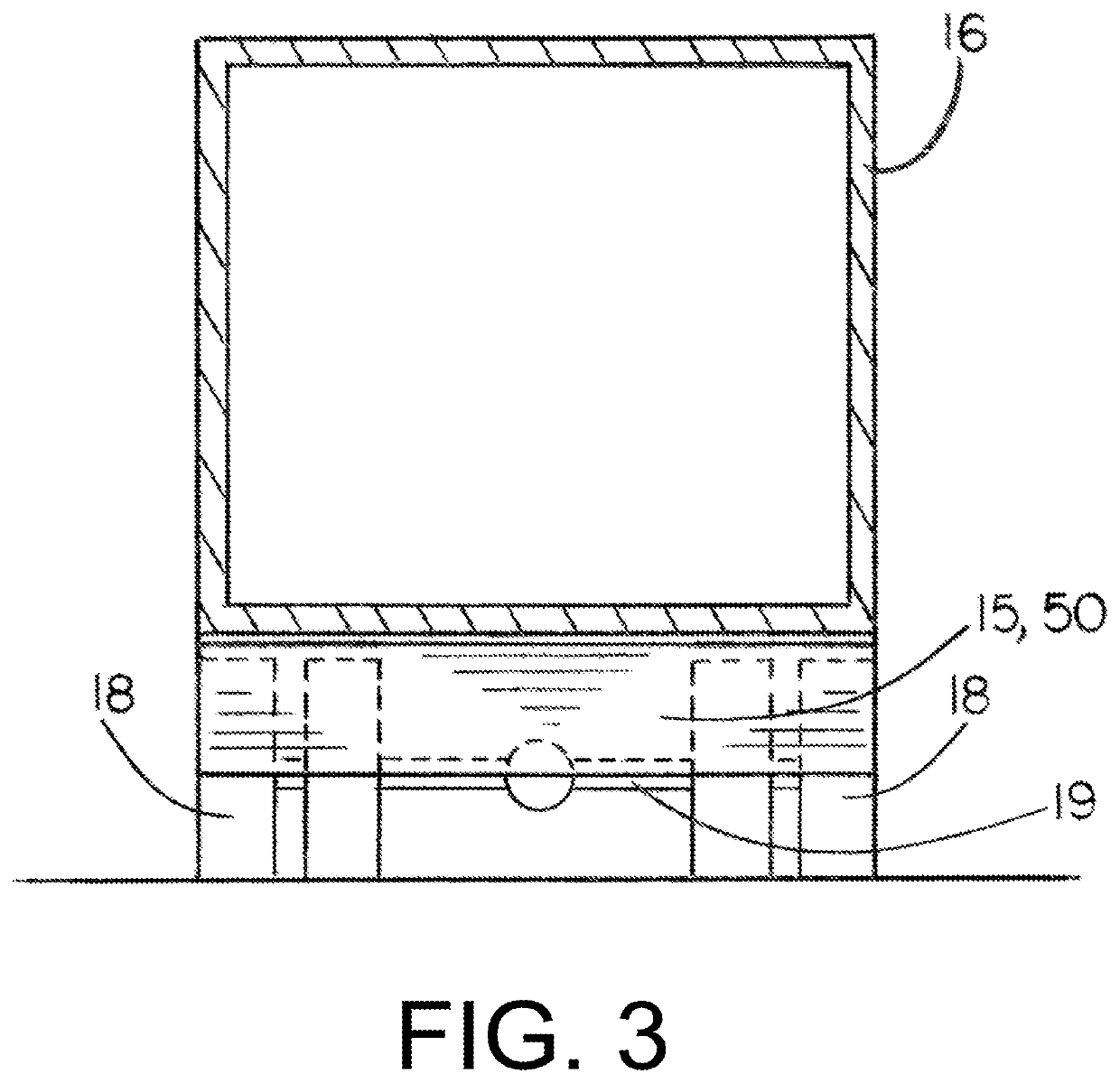Laterally inset trailer skirt and inner wheel skirt panel, each reducing vehicle drag
a trailer skirt and inner wheel skirt technology, applied in vehicle body, vehicle components, vehicle body streamlining, etc., can solve the problems of reducing propulsive efficiency, energy loss, uneven distribution of frictional drag forces, etc., to reduce the required effective vehicle propulsive counterforce, reduce drag, and reduce total drag-induced resistive forces
- Summary
- Abstract
- Description
- Claims
- Application Information
AI Technical Summary
Benefits of technology
Problems solved by technology
Method used
Image
Examples
first reference embodiment
FIGS. 1 and 2
[0140]As shown in FIGS. 1 and 2, a reference embodiment comprises an inclined aerodynamic wheel deflector panel assembly 20 attached to and mounted underneath the body of a trailer 16 for a commercial vehicle. The inclined wheel deflector panel assembly 20 is located forward of the rear wheel assembly 17 and located directly in front of a trailing wheel set 18 which would otherwise be exposed to headwinds when the vehicle is in forward motion. The inclined wheel deflector panel assembly 20 is planar in shape, mounted inclined in a forwardly-angled orientation with the upper edge more forwardly located and the lower surface located more rearward on the vehicle. The inclined wheel deflector panel assembly 20 spans the lateral width of the trailing wheel set 18 of the trailing rear wheel assembly 17 located on either side of the vehicle. The optimal inclined wheel deflector panel assembly 20 extends downward ideally to no lower than the level of the axle 19 and is located ...
second reference embodiment
FIGS. 1 and 3
[0163]As shown in FIGS. 1 and 3, a reference embodiment comprises an inclined aerodynamic deflector panel assembly 15 attached to and mounted underneath the body of a trailer 16 for a commercial vehicle. The inclined deflector panel assembly 15 is located forward of the rear wheel assembly 17 and located in front of trailing wheel sets 18 which would otherwise be exposed to headwinds when the vehicle is in forward motion. The inclined deflector panel assembly 15 is planar in shape, mounted inclined in a forwardly-angled orientation with the upper edge more forwardly located and the lower surface located more rearward on the vehicle. The inclined deflector panel assembly 15 spans the lateral width of the trailer 17, and where aligned directly in front of the wheel sets 18 ideally extends downward to no lower than the level of the axle. The inclined deflector panel assembly 15 is located proximal to the trailing wheel assembly 18 in order to deflect headwinds onto the exp...
third reference embodiment
FIGS. 4 and 5
[0164]As shown in FIGS. 4 and 5, a reference embodiment comprises a channeled aerodynamic wheel deflector panel assembly 25 attached to and mounted underneath the body of a trailer 16 for a commercial vehicle. The channeled wheel deflector panel assembly 25 is located forward of the rear wheel assembly 17 and located directly in front of a trailing wheel set 18 which would otherwise be exposed to headwinds when the vehicle is in forward motion. The channeled wheel deflector panel assembly 25 includes a deflector plate 22 which is generally planar in shape, mounted inclined in a forwardly-angled orientation with the upper edge more forwardly-located and the lower surface located more rearward on the vehicle. The channeled wheel deflector panel assembly 25 includes forwardly-projecting end plates 24 attached to either side edge of the deflector plate 22, forming a channeled deflector panel assembly 25 to funnel headwinds directly onto the lower wheel surfaces, minimizing ...
PUM
 Login to View More
Login to View More Abstract
Description
Claims
Application Information
 Login to View More
Login to View More - R&D
- Intellectual Property
- Life Sciences
- Materials
- Tech Scout
- Unparalleled Data Quality
- Higher Quality Content
- 60% Fewer Hallucinations
Browse by: Latest US Patents, China's latest patents, Technical Efficacy Thesaurus, Application Domain, Technology Topic, Popular Technical Reports.
© 2025 PatSnap. All rights reserved.Legal|Privacy policy|Modern Slavery Act Transparency Statement|Sitemap|About US| Contact US: help@patsnap.com



